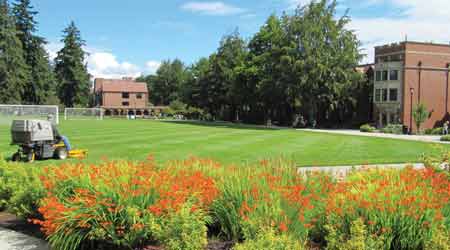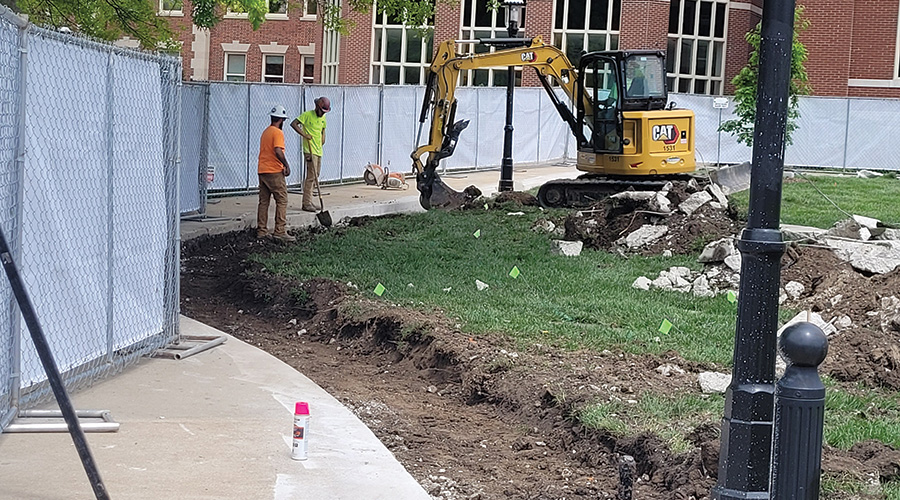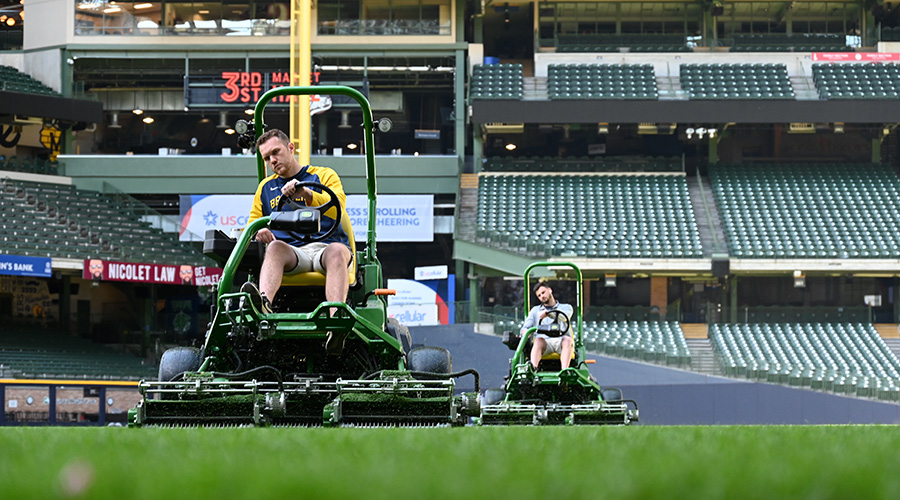 The University of Puget Sound has reduced car and truck traffic on campus, so facilities departments have come to rely on a range of other types of equipment, including utility vehicles, to perform daily activities.
The University of Puget Sound has reduced car and truck traffic on campus, so facilities departments have come to rely on a range of other types of equipment, including utility vehicles, to perform daily activities.PGMS: Digging Into Core Competencies
Grounds management certification can help managers excel in their field.
Recognizing that good site management requires a qualified, innovative grounds manager, the Professional Grounds Management Society (PGMS) developed the Certified Grounds Manager (CGM) program to evaluate a manager’s understanding of site materials, needs, costs and problem areas, as well as how to perform their duties promptly and property.
After completing an application test covering general grounds management knowledge, the candidate has up to one year to compile extensive documentation in nine core categories. Known as the Professional Grounds Manager Evaluation (PGME), the comprehensive report explains a candidate’s standards, protocols, initiatives and methodology used to ensure best management practices. The PGME categories are based on the primary responsibilities of managers: site inventory; operations inventory; turf management; trees, shrubs, and ground cover; irrigation; pavings; management skills; budgets and finance; and safety standards and regulatory compliance.
Turf management is important for grounds management, and extensive reporting is required in such areas as seeding, fertilization, cost of maintenance per acre, and mowing frequency. Understanding compaction to ensure proper air and water movement, root depth, and chemical balance are essential to successful turf.
Irrigation is a large component of the PGME. Basic water, soil, and plant interrelationships are essential, and a manager must have a working knowledge of irrigation design and practices, including friction loss and gallons per minute for different heads at different pressures. While it might not be a manager’s job to design irrigation s, they are likely involved in writing specifications, developing schedules, selecting contractors and supervising installation.
Critical to a grounds manager’s success is business acumen. Candidates are expected to have extensive budgeting, management, safety, and leadership skills.
For more information, visit pgms.org.
Stephanie Bruno is executive director of the PGMS, an individual membership society of grounds professionals. www.linkedin.com/groups/4173565; www.facebook.com/ProfessionalGroundsManagementSociety
Related Topics:














